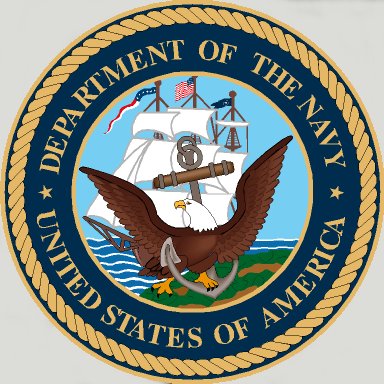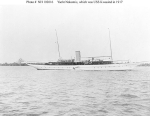NavSource Online:
Section Patrol Craft Photo Archive
USCGC Wicomico (WPYc 158)
Nan - Roger - Charlie - Able
ex-USCGC Catoctin (WPYc 158)
ex-USS Kwasind (SP 1233)
George - Rush - Quack - Watch
Love - Dog - King - Quack |
King - Love - King - Nan |


Kwasind served both the U.S. Navy and Coast Guard
Patrol Yacht:
Specifications:
| Commanding Officers | ||
| 01 | LCDR William W. Ramsay, USN | 5 December 1917 |
| 02 | LT John B. Blood, USN | 1918 - 1919 |
|
|
Kwasind
In Longfellow's poem, a friend of Hiawatha known for his great strength.
Kwasind (SP-1233), a steam yacht, was built by Robins Dry Dock & Repair Co., Brooklyn, N.Y., in 1914 as Nokomis I; then purchased from her owner, Horace E. Dodge, 9 May 1917. After conversion to Navy use at New York, she commissioned at New York Navy Yard 5 December 1917, Lt. Comdr. W. W. Ramsay in command.
Assigned to service in the Caribbean, Kwasind departed New York 9 December and sailed via Charleston and Guantanamo Bay to Santo Domingo, where she arrived 28 December. For the next I5 months she was based at Santo Domingo and sailed to Puerto Rico, St. Thomas, and Cuba with Marines and passengers. Kwasind remained in the Caribbean after the Armistice, sailing 9 June 1919 via Charleston for New York where she arrived 23 June. The ship decommissioned 5 July 1919 at New York and was eventually sold to W. H. Raab of Brooklyn 4 December 1919.
Wicomico
A river and county in Maryland.
The Wicomico was the 303-ton, 155-foot steel-hulled steam yacht built by Robins Dry Dock & Repair Co., Brooklyn, N.Y., in 1914 as Nokomis I. She was purchased from her owner, Horace Dodge, 9 May 1917 by the Navy and was renamed Kwasind (SP-1233) after the name of a warrior in Henry Wadsworth Longfellow's Song of Hiawatha. After conversion to Navy use at New York, she commissioned at New York Navy Yard 5 December 1917, LCDR W. W. Ramsay in command.
Assigned to service in the Caribbean, Kwasind departed New York 9 December and sailed via Charleston and Guantanamo Bay to Santo Domingo, where she arrived 28 December. For the next 18 months she was based at Santo Domingo and sailed to Puerto Rico, St. Thomas, and Cuba with Marines and passengers. Kwasind remained in the Caribbean after the Armistice, sailing 9 June 1919 via Charleston for New York where she arrived 23 June. The ship decommissioned 5 July 1919 at New-York and was eventually sold to W. H. Raab of Brooklyn 4 December 1919.
The Coast Guard acquired her in 1942 from the Conservation Department of the State of Maryland (at this time she was named Catoctin) for emergency service as a patrol craft. She was commissioned on 14 October 1942 at the Coast Guard Yard and was given the hull number WPYc-158 (CGR-2006). She was assigned to CINCLANT and was originally ordered to San Juan, Puerto Rico for service with the Caribbean Sea Frontier. On 19 November 1942 she was ordered to Norfolk for “orders and routing to assigned area” and got underway to Morehead City, North Carolina that same day. She departed Morehead City for Charleston on 27 November. On 7 December 1942 she requested orders “proceed on duty assigned”.
On 14 January 1943 she was ordered to report for duty at Melville, Rhode Island for service with the Motor Torpedo Boat Squadron Training Center (MTBSTC) after first having all her armament removed save for two 20mm anti-aircraft guns while undergoing a conversion-refit at the Charleston Navy Yard which started on 6 January 1943. Once at MTBSTC she saw service as a torpedo target and torpedo retriever for the PT boats undergoing training at the MTBSTC. From 23 August to 20 September 1943 she was overhauled at the Newport Ship Yard. While there, on 1 September, she was
renamed Wicomico.
She departed Rhode Island on 7 June 1945 underway for Curtis Bay where she was decommissioned 2 July 1945.
| Back To The Main Photo Index | Back to the Section Patrol Craft (SP) Photo Index |
| Comments, Suggestions, E-mail Webmaster |
|
This page created by Joseph M. Radigan and maintained by David Wright |


